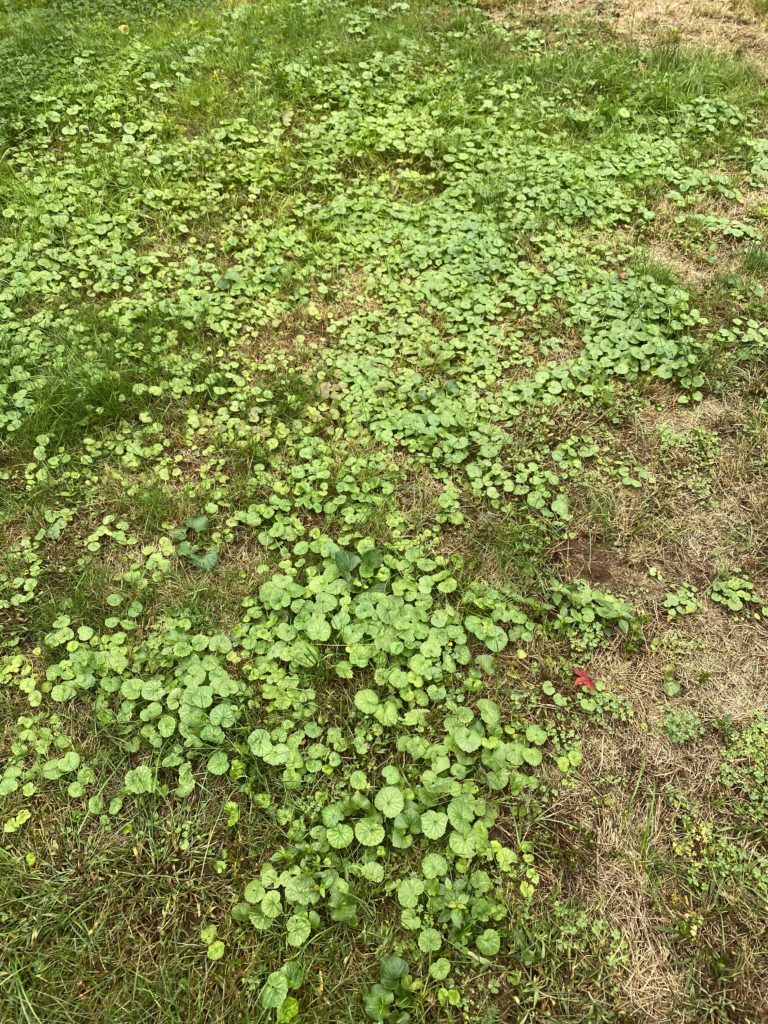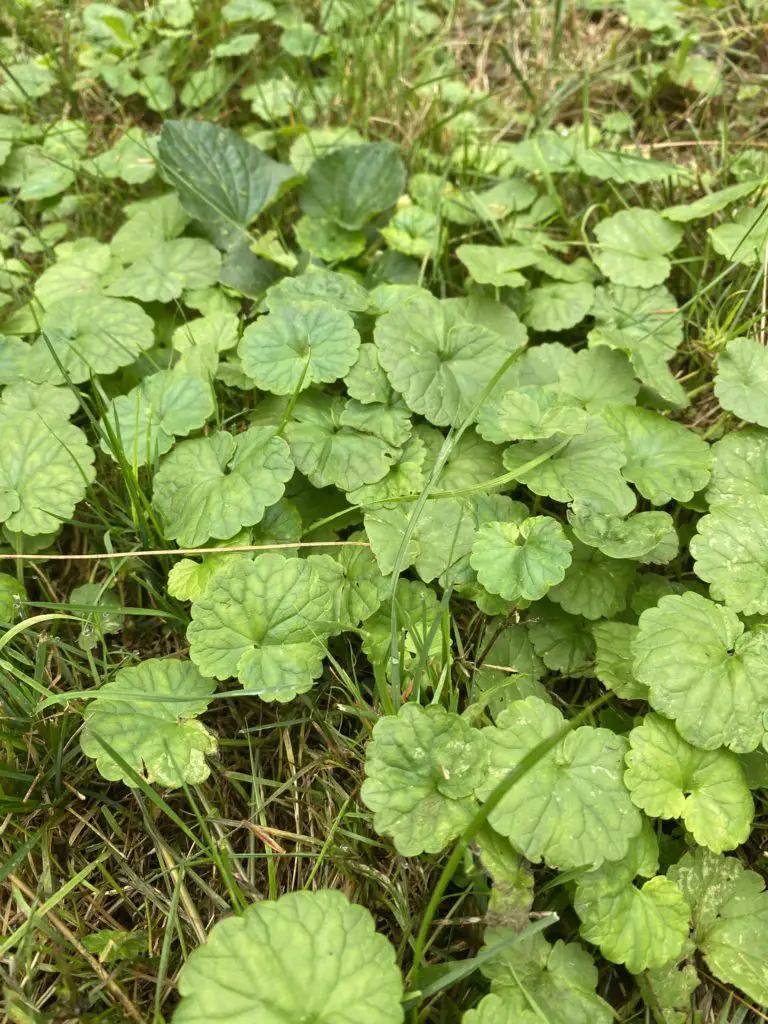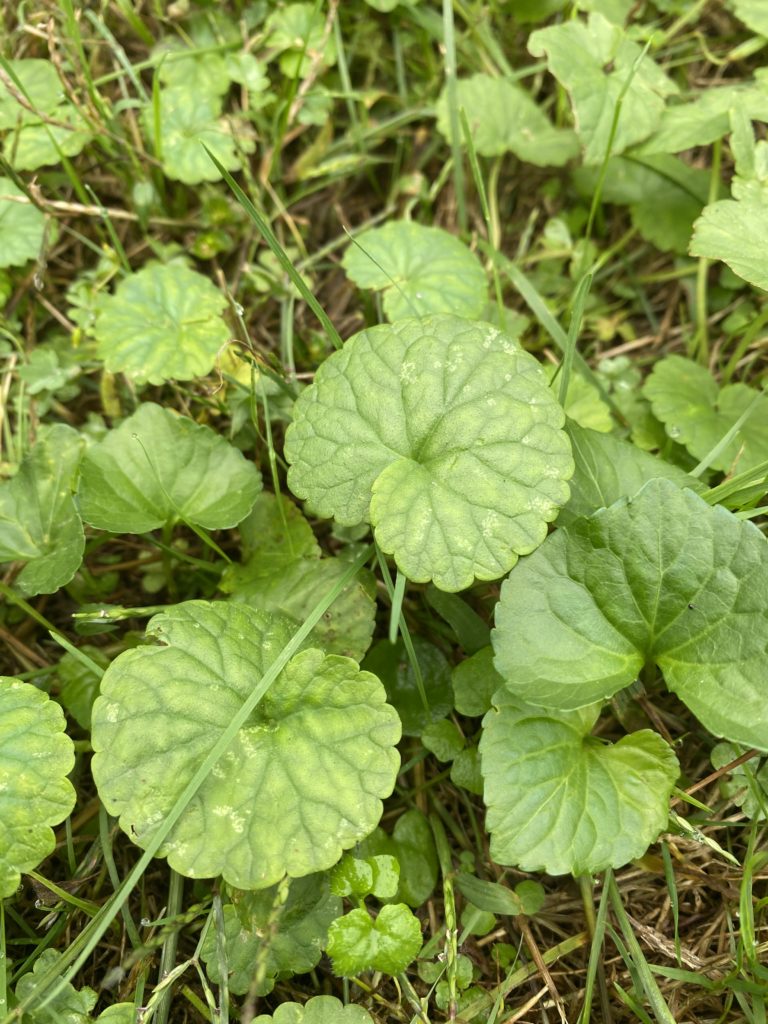LAWN PHIX PRO TIPS
Patience and persistence are the name of the game when dealing with Ground Ivy. Also known as Creeping Charlie, Ground Ivy spreads like crazy and is one of the most difficult weeds to manage. It creeps via an interconnected network of roots and vines. I’ve found that professional-grade selective post-emergent herbicides with Triclopyr as the main active ingredient work best. Straight Triclopyr can also be mixed with 2-4D and Dicamba with a surfactant for an even more effective weed killer. Spraying in the fall when the weed is actively growing is crucial. Also following up in the early spring, spaced two weeks apart has been my best strategy.
Ground ivy weeds have a tendency to be among the most invasive weeds that homeowners have to manage. Even just growth in very small amounts can lead to spreading throughout the rest of the lawn in a short period of time, essentially overtaking some or all of the turf grass. Creeping Charlie is one such ground ivy weed that spreads quickly.
Like most weeds, the best course of action is not to kill Creeping Charlie after it grows, but to prevent it from growing in the first place. In this post, we’ll share how to prevent the weed from growing and how to get rid of Creeping Charlie if it does manifest in your lawn or garden. Here’s a closer look:
Table of Contents
Creeping Charlie Identification
A member of the mint family of weeds, Creeping Charlie is a highly adaptable plant that can form a mat-like ground cover over your lawn. These pesky weeds grow low to the ground and are common in both full sun and shady areas.
The invasive green vine weed, which resembles ground ivy, is characterized by bright green leaves with scalloped edges. They have creeping stems that give way to small blue or purple flowers in the spring. It’s not to be confused with the similar Creeping Jenny weed, a perennial with yellow flowers.
This invasive weed tends to thrive in moist or damp soil, and its growth habit makes it particularly challenging to manage. In the next section, we’ll get into how to kill Creeping Charlie. Later on, we’ll talk about how to prevent Creeping Charlie and other pesky weeds from overtaking your otherwise healthy lawn.



Killing Creeping Charlie: The Basics
Killing Creeping Charlie can present its challenges after it begins to form roots. However, it is possible to get rid of Creeping Charlie, and there are a few ways to do it. Here’s a look:
Treatment via herbicide application
Applying herbicides is one way to kill this weed. However, you should know that not every herbicide can do the trick on lawns. You need to select a broadleaf weed killer that contains dicamba and triclopyr, like TZone, Crossbow or 4-Speed XT – and even if you do, this is best applied to the weed in the spring before the weeds flower, and early fall before the first frost. Ensure not to mow the treated area for at least three days following the application to the lawn.
Remove Creeping Charlie by hand
If the Creeping Charlie in your lawn is mild, you may try hand-pulling the weed. Start by moistening the soil or taking action following rain. Then, gently pull it out by the root.
How to smother actively growing Creeping Charlie
Finally, you can smother Creeping Charlie by using newspapers, mulch, or a combination of the two. Just cover the entire area where it’s growing so it can’t receive the nutrients it needs. Keep an eye on the area to make sure it doesn’t re-root.
How To Prevent and Control Creeping Charlie
As is the case with most weeds, it’s easier to prevent Creeping Charlie than it is to kill it. Preventing it will help keep other plants, trees, turfgrass, and vegetation protected. Here’s a closer look at how to prevent and control Creeping Charlie vines:
Encourage healthy lawn growth
Brush up on your lawn care plan to grow healthy grass. This will work to inhibit Creeping Charlie from growing. Make sure you’re also feeding your lawn with the appropriate fertilizer to encourage healthy root growth and watering adequately if there’s a lack of natural rain. Regular mowing at high heights can help too.
Additionally, make sure you’re overseeding or filling in bare spots in your lawn in either the fall before winter comes or in the spring. These tend to be periods that facilitate growth thanks to mild days and cool nights.
Improve soil drainage
Creeping Charlie tends to prefer soil that is damp and slightly acidic. It also tends to like shaded areas, where the soil may stay moist for longer than sunny spots. Improving soil drainage can help keep Creeping Charlie at bay.
Creeping CharlieFAQs
What kills Creeping Charlie but not grass?
How do you kill Creeping Charlie without damaging your lawn or any other plants? You can either pull it by hand or use a herbicide that’s designed to eliminate it safely like TZone. Don’t use Borax, as it can harm grass, and both existing and new plants.
Is Creeping Charlie bad for your lawn and yard?
Creeping Charlie is aggressive and invasive – and it can quickly spread throughout your lawn, potentially taking it over completely. Though bees tend to like it for pollination purposes, it’s not a weed that you want growing in your yard.

